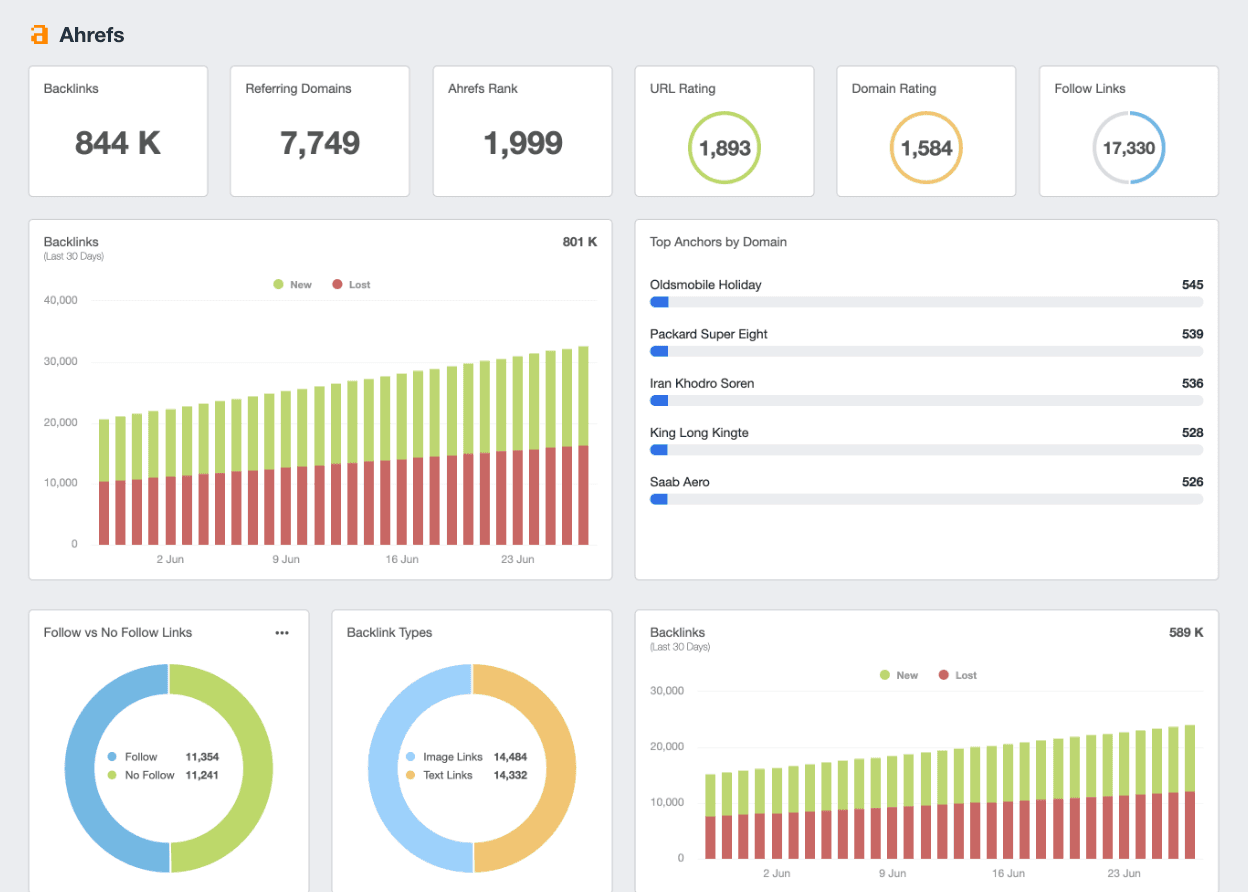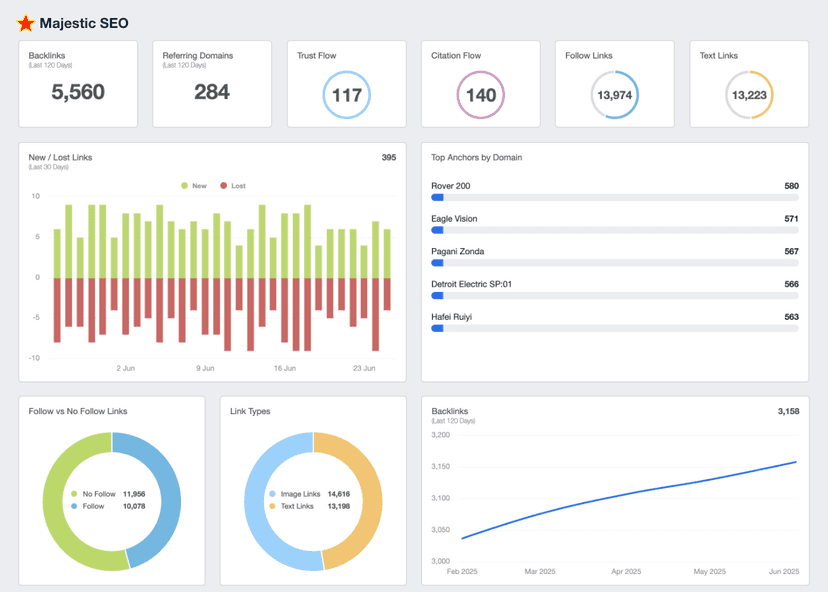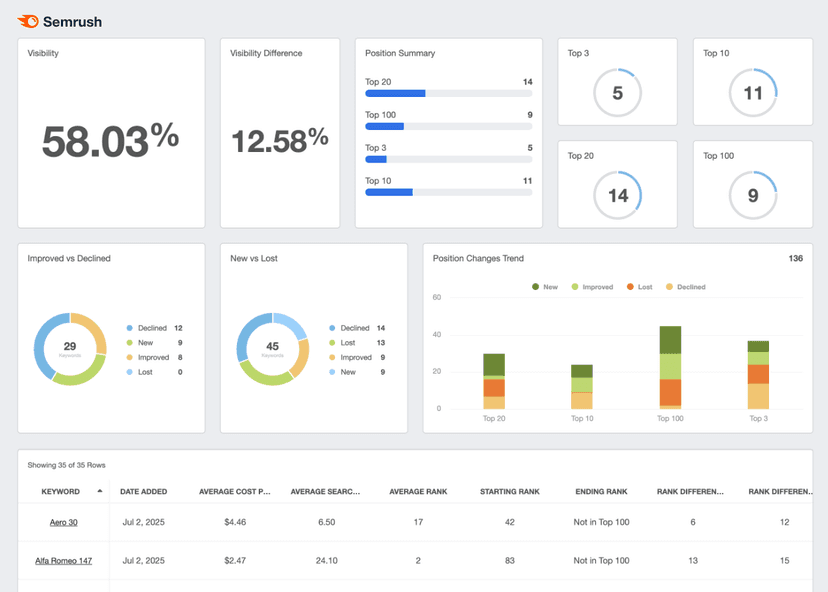Backlinks
Referral Traffic Analysis
Evaluate which Backlinks bring in the most referral traffic and prioritize relationships with these websites.
Foster Collaborations
Seek link-building opportunities with high-quality websites to boost authority, visibility, and ranking on search engines.
Content Strategy Adjustment
Assess existing content to understand what attracts the most external links.
Competitive Analysis
Monitor competitor Backlinks to identify content ideas and potential link-building opportunities.
Why Backlinks Are Important
When a website receives Backlinks, it's essentially getting a nod of approval from other web pages, signaling trustworthiness and relevance.
This trust is not only seen by users but is also recognized by search engines like Google. In fact, Backlinks are often a determining factor of site authority and subsequent search ranking.
Backlinks aren't just about quantity, though. A few high-quality Backlinks from authoritative sources may be more beneficial than numerous links from lesser-known web pages.

Stop Wasting Time on Manual Reports... Get SEO Insights Faster With AgencyAnalytics
How Backlinks Relate to Other KPIs
Backlinks are just one part of the search engine optimization puzzle — they must be considered alongside other KPIs for a more all-round understanding.
For example, organic search traffic is directly influenced by Backlinks (especially if those links are from high-traffic, reputable sources).
That said, the quality and relevance of these inbound links impact bounce rate. Contextually relevant Backlinks often bring in engaged visitors who are more likely to stay on the site, explore further, and convert.
Essentially, Backlinks themselves are influenced by content quality. Therefore, not all backlinks are equal. Exceptional content tends to garner more Backlinks, which further emphasizes the importance of a holistic marketing strategy.

How To Track the Number of Backlinks
In its simplest form, the number of Backlinks is the total count of incoming links from external websites. For websites with a high volume of Backlinks, specialized SEO tools (like Ahrefs, Majestic, Moz, or Semrush) are better suited to do this heavy lifting for marketing agencies. These platforms crawl the web to discover and list all the links pointing to the website. They also provide the quantity, quality, and relevance of each link.
What Is a Good Number of Backlinks?
The ideal number of Backlinks varies based on factors like industry, website age, competition, and target audience. A steady and organic increase in Backlinks over time, without sudden spikes, is typically a healthy sign.
While older and competitive websites might require more Backlinks, quality consistently trumps quantity. A few links from authoritative sites can outweigh hundreds from lesser sources.
Instead of targeting a specific number, prioritize acquiring high-quality Backlinks and monitor search performance and traffic.
What Is a Bad Number of Backlinks?
There isn't an exact bad number of Backlinks to have. However, very few backlinks may hinder search engine ranking, especially if competitors have more. Plus, a large number of low-quality, irrelevant, or spammy Backlinks will likely harm a website's search engine ranking.
Be wary of blackhat link-building schemes that aim to inflate the number of incoming links artificially. Rapid spikes in Backlink acquisition — especially from unrelated or known spammy domains — may lead to penalization from search engines.
How To Set Backlink Goals and Benchmarks
Use past Backlink performance as benchmarks to aim for or surpass. Create a link-building goal by back-calculating the required number of quality Backlinks to hit specific organic search engine traffic or revenue targets. To do this, consider conversion rates and the value of referred traffic from past data.
Why Backlinks Matter to Clients
Why are backlinks important to clients? They're more than just links–they're endorsements and votes of confidence. Think of them as online referrals. When a reputable site links to another website, it’s like getting a recommendation from a trusted friend. This leads to a higher user perception and even word-of-mouth referrals.
Additionally, Backlinks drive qualified traffic directly to their website. Quality Backlinks mean more potential customers are finding the business through organic search engines without additional marketing spend. Over time, this will elevate brand recognition, reduce customer acquisition costs, and establish credibility.

Why Backlinks Matter to Agencies
For agencies, Backlinks are tangible markers of successful content and outreach campaigns. Acquiring quality Backlinks often means an agency's content strategy, PR efforts, or outreach campaigns are hitting the mark.
By showing the outcomes of well-planned Backlink efforts, agencies demonstrate their skill in crafting successful organic strategies. This also doubles as a point of differentiation for client industries with a saturation of paid ad campaigns.

Turn Data Chaos into Client Success Stories with AgencyAnalytics.
Best Practices for Analyzing and Reporting on Backlinks
By adhering to these best practices, agencies will ensure that their inbound link reports are impactful, insightful, and actionable.
Provide Clarity
Start with a clear and concise executive summary highlighting backlink metrics and achievements. This offers clients a snapshot without delving into complex details immediately.
Quality Over Quantity
Emphasize the importance of the quality of Backlinks over quantity. Showcase links from websites with strong domain authority. Use nofollow links for untrusted, paid, or non-endorsed sources.
Categorize Backlink Sources
Break down Backlinks by source type (e.g., blog posts, organic search, news sites, or partner websites). This gives clients insight into which channels are most effective.
Future Recommendations
Provide actionable recommendations for future backlink strategies. This could include content suggestions, adding more inbound links, or fixing broken links.
Address Challenges
If there were any issues — like the loss of a significant backlink or a surge in broken links — address them upfront. Explain the potential implications and the steps being taken to remedy the situation.
Connect to ROI
To demonstrate value, tie Backlink efforts to return on investment. For instance, explain how a backlink from a specific web page led to organic traffic surges or conversion upticks.
Ahrefs Dashboard Example

Related Integrations
How To Improve Backlink Count
Follow these practical tips to increase your Backlink count and strengthen online presence.
Provide Original Content
If you have enough data and resources, conduct surveys and offer insightful results that prompt other websites to cite findings.
Engage in Partnerships
Collaborate with reputable, complementary websites to increase reach, access networking opportunities, and get mutual backlinking.
Optimize Existing Content
Ensure the website is regularly updated and optimized, which increases the chances of organic Backlinks.
Related Blog Posts
See how 7,000+ marketing agencies help clients win
Free 14-day trial. No credit card required.










